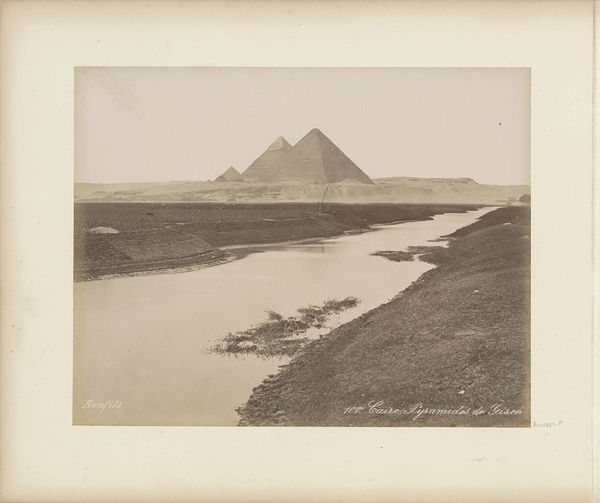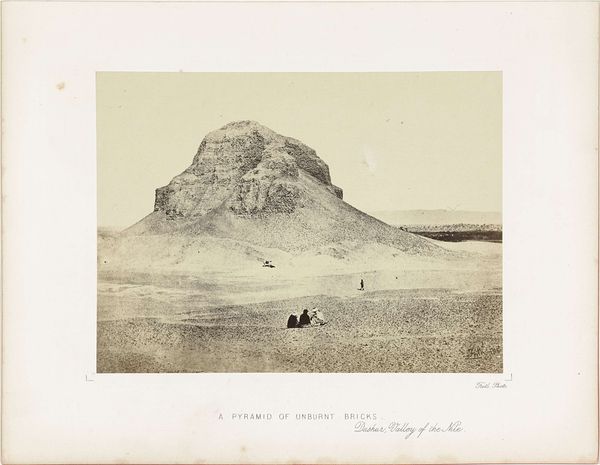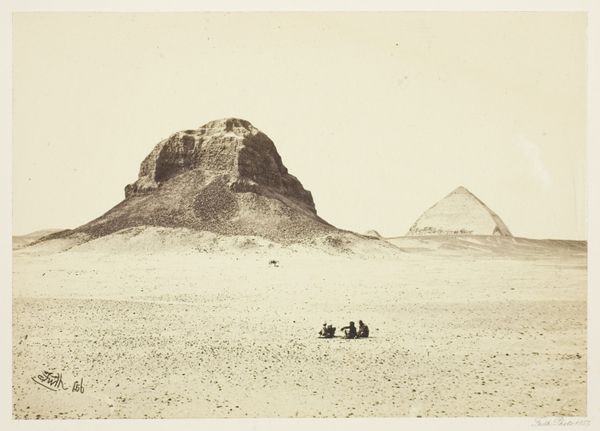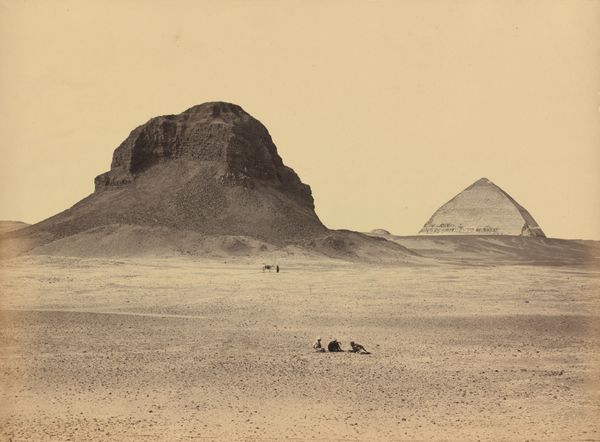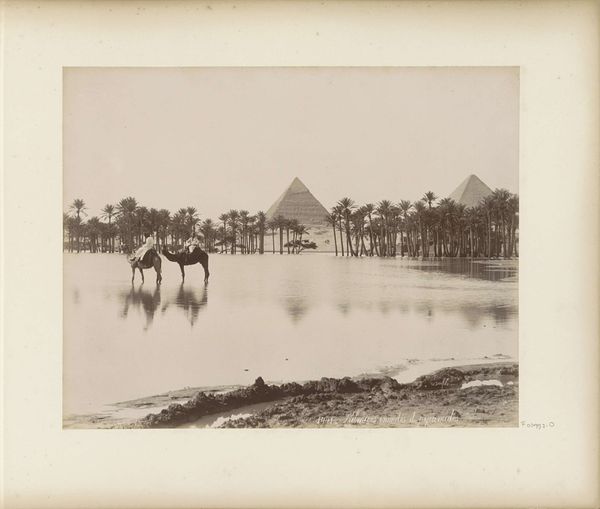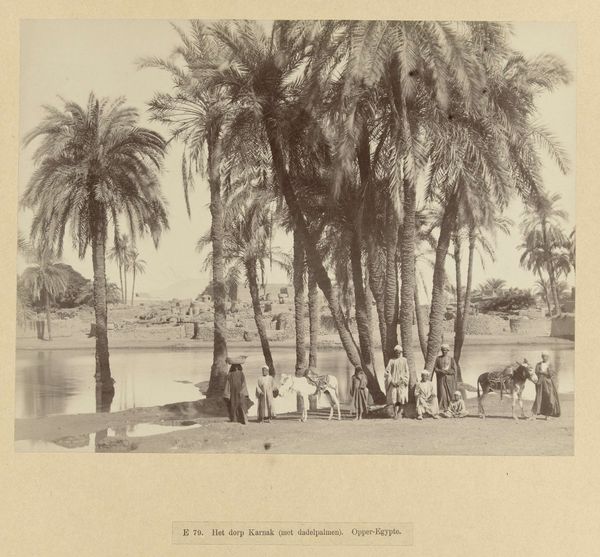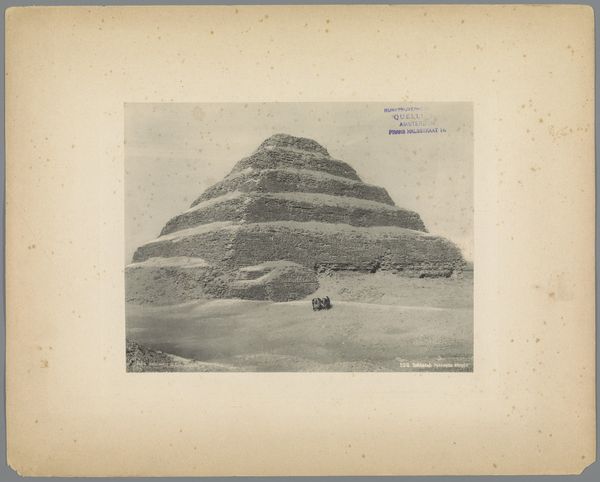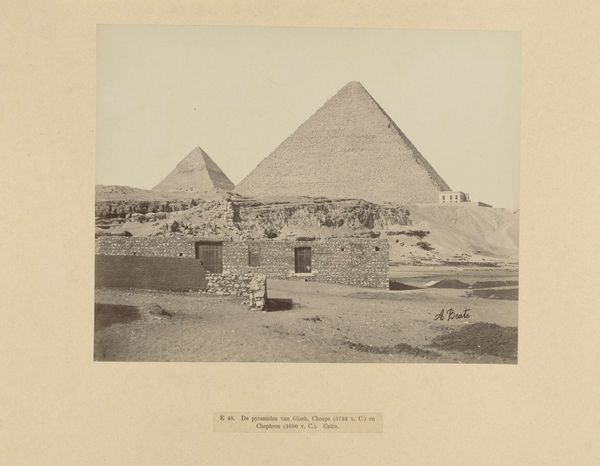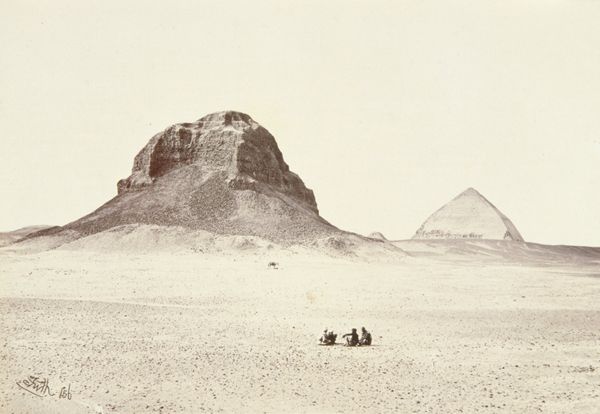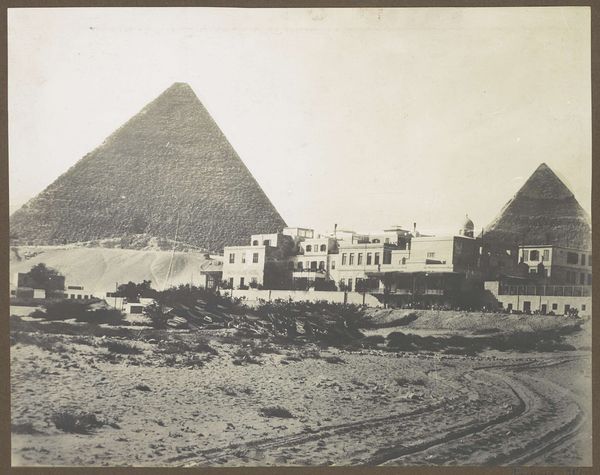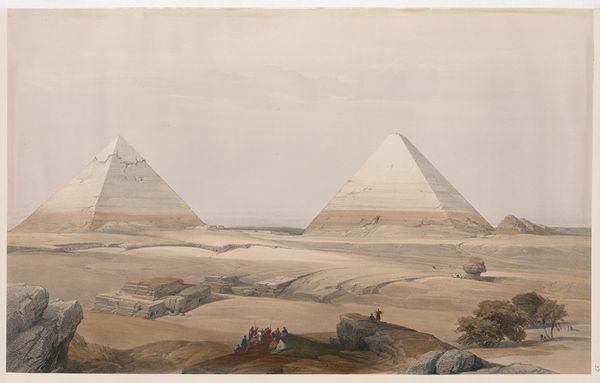
Gezicht op de piramides van Gizeh, gezien vanaf de oever van de Nijl 1888 - 1895
0:00
0:00
photography, albumen-print
#
landscape
#
river
#
ancient-egyptian-art
#
photography
#
ancient-mediterranean
#
albumen-print
Dimensions: height 208 mm, width 266 mm, height 469 mm, width 558 mm
Copyright: Rijks Museum: Open Domain
Jean Pascal Sébah made this photograph of the pyramids of Giza from the bank of the Nile at an unknown date. It’s a striking image, but what does it tell us? In the late 19th century, photography studios sprung up around the world to capture the images of far-flung places and people. Sébah, based in Cairo, catered to European tourists eager to bring home a piece of the exotic. The pyramids, ancient symbols of power and mystery, were of course a popular subject. But the photograph is more than just a postcard. Note the two figures wading in the Nile. They’re locals, part of the scenery, yet their presence speaks to the complex relationship between the photographer, his audience, and the people of Egypt. As historians, we can look at photographs like these to understand the social and cultural dynamics of the time, using sources like travelogues, colonial records, and the photographer’s own archive. Each viewing of the image depends upon context.
Comments
No comments
Be the first to comment and join the conversation on the ultimate creative platform.
